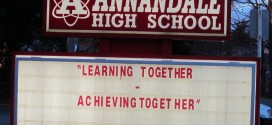By Jennie L. Ilustre
Bring out the champagne! Asian American LEAD (ALLEAD) is celebrating its 15th anniversary as a difference-maker. What’s more, last month, the D.C. Mayor’s Office on Asian and Pacific Islander Affairs (OAPIA) awarded AALEAD over $43,000 as its first-time Vietnamese American Youth Empowerment (VAYE) grant.

“The grant is a new grant opportunity that will help provide much needed supplementary mentoring and academic services to Vietnamese American youth in the District,” said OAPIA Director Soohyun “Julie” Koo.
“We are excited about this first-time funding for the Vietnamese community and hope the capacity-building funding furthers the longevity of Community Based Organizations the District,” she stressed.
AALEAD Executive Director Surjeet Ahluwalia described OAPIA as “a great partner.” (Another is Montgomery County, Maryland.) The D.C. grant will be used to add a new staff person. “She will be starting tomorrow,” she said on February 10, elation evident in her voice. “My Nguyen will manage the program in strengthening our relationship with the Vietnamese American community.”
Advocate Sandy Dang started AALEAD in 1998. The goal: To promote “the well-being of low-income and underserved Asian American youth through education, leadership, and community building.” It is a 501(c)(3) nonprofit organization.
OAPIA also awarded capacity building grants totaling $3,500 to the Asian/Pacific Islander Domestic Violence Resource Project and Many Languages One Voice. The grants will help the recipients with their fundraising and management development needs. Neel Saxena is the District’s Grant Manager and Program Coordinator under the Mayor’s Executive Office.
Anniversary Highlights
AALEAD’s 15th Annual Dinner will take place on March 26, Wednesday, from 6:30 p.m. to 9:30 p.m. at the Silver Spring Civic Building.
There will be no outside keynote speaker. Remarked Executive Director Surjeet Ahluwalia in phone and email interviews: “It’s a big milestone for us. The format will be similar to last year’s dinner, where we will focus on the voices of our community–our students, alumni and Board directors–so there will be more time for networking.”
The highlights: A networking reception, stories and testimonies from speakers, and time to mingle with some of the D.C. Metropolitan area’s top community, business and government leaders while enjoying dinner (compliments of Szechuan Delight). For tickets, visit the website (www.aalead.org). Or contact Development & Communications Manager Sharon Choi at schoi@aalead.org
“AALEAD continues to grow, and we have increased our focus on data and outcomes,” Ahluwalia added. “Last year, we narrowed our targeted outcomes to Educational Empowerment, Identity Development, and Leadership Development.”
AALEAD is known for its “specialized afterschool programs, one-on-one mentoring, academic support resources, and life skill development for students.” It even helps parents with school-related concerns affecting their children. Currently, it serves over 300 students in D.C. and Maryland, who represent more than 14 different Asian ethnicities.
The Catalogue for Philanthropy, one of its partners this year, calls it “One of the best small charities in the Greater Washington region.” Other 2014 partners are the D.C. Public Schools, Kollaboration D.C., the Montgomery County Department of Recreation and the Montgomery County Public Schools.
How to Nab Those $$$ Grants
The pie has become smaller for non-profits as a result of the 2008 recession. What to do? Here are some tips, as seen from two points of view: A grant manager and a grant recipient.
D.C. government’s Grant Manager and Program Coordinator Neel Saxena was under the weather when asked to share some tips for successfully obtaining grants, but he graciously shared his views on the topic.
OAPIA evaluates all applicants on five basic criteria. When an organization successfully meets these, they are rated highly and often selected for funding.
a. Soundness of the Proposal – The program that the organization proposes is realistic and accomplishes the goals, objectives, and outcomes set by the organization.
b. Program Goals, Objectives, and Services – The program goals, objectives and services set by the organization are specific, measurable, attainable, realistic, and time-bound. The organization demonstrates their effectiveness as an organization in accomplishing goals and objectives.
c. Program Evaluation – The organization demonstrates a clear process to evaluate its proposed program.
d. Organizational Capacity and Relevant Experience – The organization demonstrates its experience and capacity to work with the target community, including their capacity to address specific barriers the community faces. The organization demonstrates its organizational structure and staffing are able to accomplish the goals set forth, and the structure and staff are effective in implementing the proposed program.
e. Sound Fiscal Management and Budget – The organization should also possess sound fiscal management, such as fiscal monitoring protocols and systems. The budget should be realistic and links clearly to the proposed program.
What Makes a Successful Grant Proposal
a. Follow Directions – Answer all the questions in the correct format and length and pay close attention to all the instructions. Sometimes, making a checklist can help if one is not provided. It is important you identify how the grant will be evaluated and ensure all parts are included in the final submitted proposal.
b. Highlight why your program is best suited – Make the case on why your organization and program is best suited to address the issue/problem and focus on your solution.
c. Be Clear and Concise – Because there is limited space, it is important to get your message across in a short amount a space. Be sure to avoid jargon and hyperbole and try and connect to the reader. Be clear about how your program addresses the criteria set forth so the reader does not have to go look for it in your proposal. Sometimes, bullet points or tables can express the same concept in an easier to read format.
d. Attend the Pre-bidders meeting or ask the Grantor – The pre-bidders meeting is an opportunity to directly communicate with the funder. And if there is a Question and Answer period, make sure to clarify any questions you might have. It’s always better to not assume or guess what the funder is asking for.
Tips from Dave Nguyen
AASuccess Founder and Executive Coach
AASuccess recently received a $4,000 grant from the Cherry Blossom Giving Circle.
I can only speak on behalf of our organization, AASuccess. We believe that the grant went our way because of the following key elements, which should be applicable to any grant writing process.
We were honest to articulate our challenges. We demonstrated steady improvements, with or without any additional grants.
We have built into our system key elements that speak of our passion and commitment and sustainability efforts: Business Support Community, private donors and businesses that are willing to work and/or partner with us for at least 2-3 years.
We were able to articulate specifically what we needed for the grant. We specified that with the grant, we could provide more space for students to work more effectively and more efficiently with our one-on-one life skills sessions. We let them know clearly that we have 20 students/coaches every Saturday working at roughly 1,100 square feet of working space.
We clearly stated that our working space’s rent was cut down in half due to partnership with BCLC (bcl-centre.org) to share working space.
We made efforts to visit and talk to grantors either in-person or via phone. We articulated well with specificity and passion about the work that we do–that is, to have nurturing students becoming professionals AND willing to come back to recycle the process.
Our Financial Record is clean and clear. All the money raised was spent for our students.
We have a dedicated group of working professionals/business owners, including myself, willing to put up at least 10 hours per week, year-round, to work with and for our students. Grantors want to see consistency in resources that can be brought in from credible sources.
Our Weekly Blogs and Newsletters are factual evidence to support the work that we do with an annual $50,000 budget, 2/3 of which is dedicated to rental expense.
Last but not least, we let the grantor know where and how the money was going to be used, and how we can measure the results due to the extra grant money: Information Technology Upgrade for a virtual learning center and laptops for our students.
 Asian Fortune Your source for all things Asian American
Asian Fortune Your source for all things Asian American



